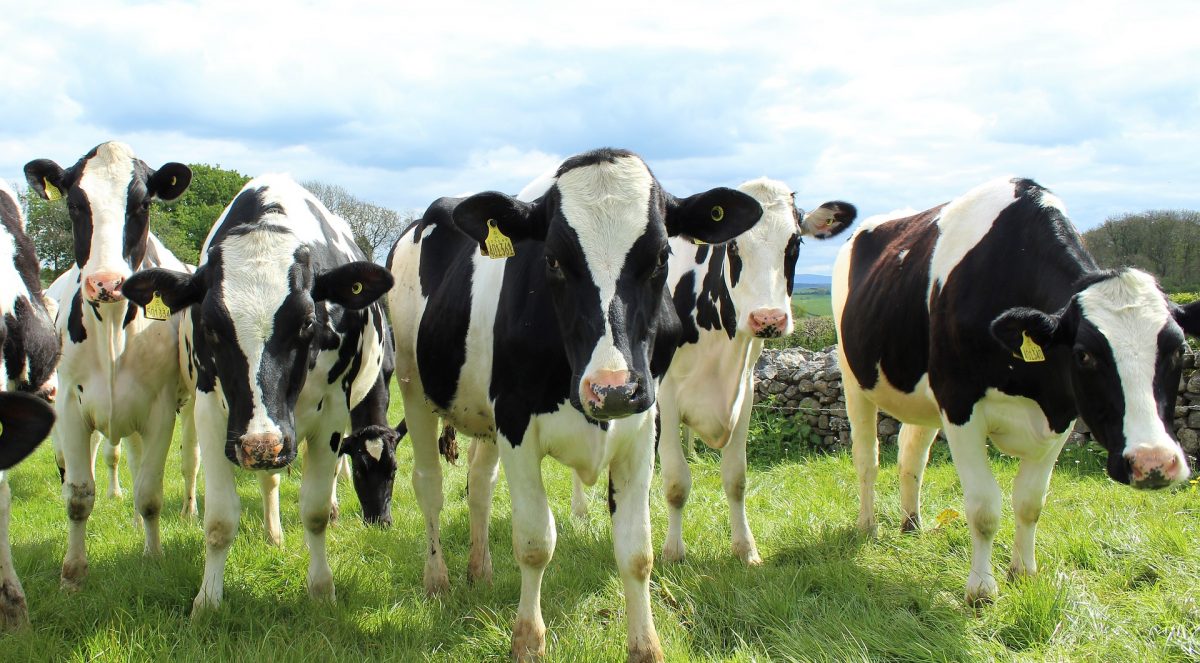The heat stress of livestock, resulting from combinations of air temperature, humidity, solar radiation, and wind speed, are expected be exacerbated by climate warming. This added stress makes it difficult for animals like cows and pigs to control their own body temperature.
When livestock are unable to dissipate heat effectively, an article in Popular Science explains, their body temperature increases, which can reduce their productivity and adversely affect the world’s food supply.
Of the predominant livestock industries in the US, the dairy industry is estimated to be the most vulnerable to economic losses from heat stress, says Amanda Stone, assistant professor and extension dairy specialist at Mississippi State University.
Dairy’s risk is significantly higher than beef cattle, the next most vulnerable industry.
Heat stress does not only affect the behaviour and welfare of cattle, but also reduces their feed intake, productivity, and animal fertility, says Philip Thornton, principal scientist at the International Livestock Research Institute and flagship leader in the CGIAR Research Program on Climate Change, Agriculture, and Food Security.
“Animals eat less and increase their respiration, so more energy is expended on trying to keep cool, with less energy available for meat and milk production,” he said.
Moreover, it increases their susceptibility to diseases and – in cases of extreme heat stress – their mortality as well.
Extreme heat recently killed thousands of cattle in Kansas, one of the largest cattle producers in the United States.
According to a study published in The Lancet Planetary Health in March, the impact of climate-change-related heat stress on dairy and beef cattle production may lead to global production losses of meat and milk amounting to about $US40 billion a year by the end of the century for a high greenhouse gas (GHG) emission scenario.
To compute the losses, the authors predicted changes in feed intake by the animal in response to hot, humid weather in various GHG emission scenarios. They converted these changes in feed intake to changes in milk and meat production, and then valued them using 2005 prices, says Thornton, who is one of the authors of the study.
Based on the study, the losses in tropical regions are estimated to be higher than those in temperate regions, for both high and low emission scenarios.
“Some parts of the northern temperate areas of the globe may see increased production as cold spells decline,” says Thornton.
“In other words, more of the energy in the feed eaten by animals can go towards meat and milk production, rather than keeping the animal warm.”
The impacts of heat stress on cattle can affect the food security and diet diversity of both livestock producers and consumers. Producers may experience income reduction, loss of assets, and decreased resilience of their livelihoods, while consumers may face higher prices for meat and milk, says Thornton.
Because food supply depends on products coming from farms, the entire food supply chain suffers whenever there is a disruption in these systems, says Stone.
“We may see a shift in where these farms are in relation to our consumers—for example, ‘local’ may be a farm 100 miles away instead of 10—and there will be fewer farms with more cows supplying all our needs,” she adds.
This makes it crucial to mitigate the impacts of increasing heat stress on cattle production.
Because cows can’t sweat as humans do, where they live inside a barn, fans and sprinklers can be used to create an evaporative cooling system, says Stone.
Sensor technologies that monitor cow behaviour as well as physiological and production changes can adjust barn temperatures based on what is happening with the cows.
For outdoor production systems, a wide range of feed additives such as betaine or chromium may alleviate heat stress to an extent due to their antioxidant capacity. Livestock grazing systems coupled with trees can also be effective in shading animals during hot and humid spells, says Thornton.
In parts of Africa, some farmers are switching species altogether: from cattle to more heat-resilient goats and camels.
Source: Popular Science












